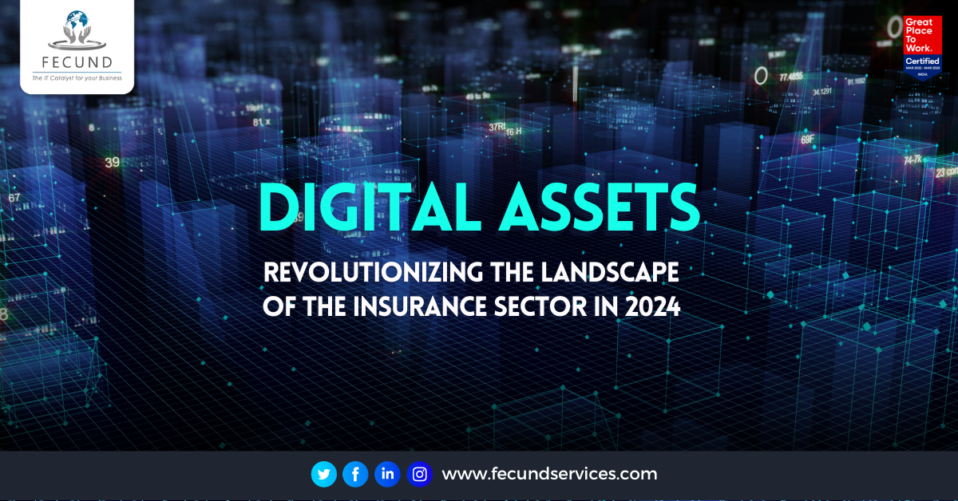INSURANCE TECHNOLOGY TRENDS IN 2020
Insurance Technology Trends 2020

Many changes in technology in the last decade have drastically impacted pretty much every industry and the insurance industry is no exception. The industry is becoming more technologically advanced by the day. Insurers have started believing that rapid innovation must happen. 73 percent of insurance CEOs agreed that making investments in the latest technologies will help them to be more cost-efficient. This proves that the insurance industry is evolving. Both end-users and insurance companies are interested to take advantage of the advancements.
Technological trends that are likely to impact the insurance industry in 2020 will modernize every aspect of insurance. This includes policy claim processing, documentation, determination of coverage, underwriting, etc.
Our team of insurance domain experts has identified five emerging technologies that will drive significant changes in the insurance industry in 2020.
- Blockchain
- Big data
- IoT
- Artificial intelligence
- Robotic process automation (RPA)
Blockchain
Blockchain is a distributed ledger in which transactions and their records can be exchanged. This technology has revolutionized operations across a multitude of sectors. It has enabled stakeholders – reinsurers, brokers, vendors, and ecosystem partners – to interact with each other. Trust, transparency, and immutability are the three fundamentals based on which blockchain provides a single source of truth that is updated in real or near-real-time. According to some marketing reports the blockchain in the insurance market is expected to grow from USD 64.5 million in 2018 to USD 1,393.8 million by 2023, at a CAGR of 84.9%.
Blockchain helps in creating a positive customer experience with improved accuracy and speed. Higher customer satisfaction because of the shortened claims cycle, faster and better access to data enables smoother interaction between insurers and their customers. Lower premiums can be achieved with the reduction of inefficiencies and costs throughout the value chain could.
Big data
Big data help to manage, analyze, and understand data and make forecasts. This helps the insurance industry to make decisions to drive profitability to the business.
- Analytical insights – Better risk analysis can be done with the help of valuable insights coming from data analytics into insurance.
- Text Mining – Fraudulent claims can be identified effectively and easily by applying advanced data analytics techniques like the predictive analysis. E.g. The usage of text mining, rules, and database searches. Insurance companies collect huge volumes of text daily and through multiple channels (their agents, customer care centers, emails, social networks, web in general). The information collected includes policies, expert and health reports, claims and complaints, results of surveys, relevant interactions between customers and no-customers in social networks, etc. Text analytics techniques allow analyzing the text of insurance claims, settlement notes, etc. to prioritize their study by the company’s Research Unit. E.g. common patterns are sometimes detected in claims from a multiple accident, which can be an indicator of organized fraud. Quick decision making, using the appropriate indicators (KPI), helps to prevent fraud and increase the benefits. In this sense, text analytics, at times through dashboards, provide vital information to make quickly well-justified decisions.
- Customer acquisition – Data analytics allows the insurance companies to know, understand, and analyze their customer behavior and identify patterns, based on which they come up with customized quotes to sell their products online and maximize their profits.
IoT
IoT empowers insurance companies to decide risks more accurately. It allows insurers to get connected with their customers more regularly and to offer new products based on the information they have collected. IoT considerably helps in
- More targeted customer contacts
- Review price models
- Reduce cost
Rather than filling out several paper forms, customers can now submit claims via mobile apps by clicking a few pictures. Risk calculation and hence adjusting policies is easier with devices like bio-metric and environmental sensors. IoT sensors provide behavioral policy pricing based on personalized data, which allows safer drivers to pay less for auto insurance (known as usage-based insurance) and people with healthier lifestyles to pay less for health insurance. In the coming years, the Internet of Things (IoT) will profoundly alter the insurance industry.
Artificial Intelligence
Artificial Intelligence (AI) is the new buzzword in the insurance industry. We will see insurance become more personalized because insurers using AI will be able to understand better what their customers need. Insurers will be able to realize cost savings by speeding up workflows. They will also discover new revenue streams as AI-driven analysis opens a new business and cross-selling opportunities.
RPA
Robotic process automation (RPA) is the fastest-moving technology in the field today. The global robotic process automation market is expected to reach $8.69 billion by 2023, according to P&S Intelligence. Insurance companies can tap the maximum benefits of RPA by standardizing as much of the manual work as possible. When compared to traditional automation, robotic process automation in insurance has specific benefits: Faster claims processing, easier policy cancellation, simplified new business onboarding, standardized processes are some major benefits.
With all the innovation going to market in recent years, from smart home technology, self-driven cars, to insurtech and microservices, 2020 will be a very interesting year to watch for insurance technology developments.




Post a comment